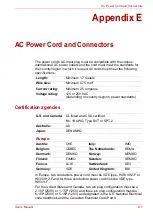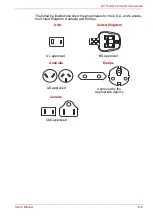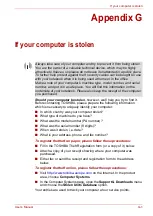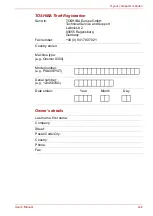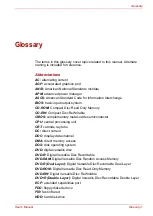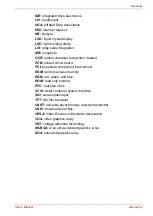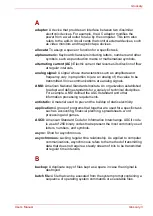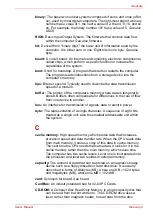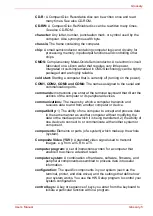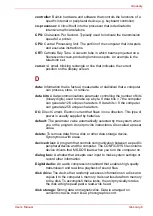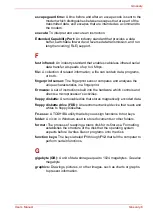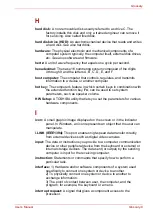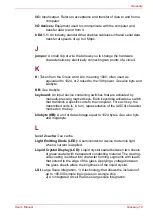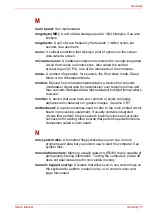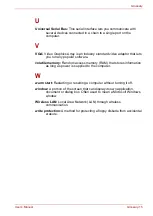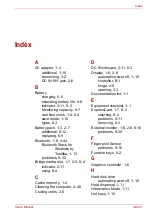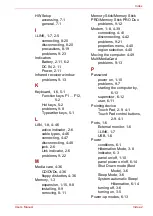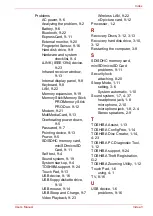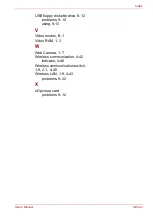
User’s Manual
Glossary-10
Glossary
I/O:
Input/output. Refers to acceptance and transfer of data to and from a
computer.
I/O devices:
Equipment used to communicate with the computer and
transfer data to and from it.
IrDA 1.1:
An industry standard that enables cableless infrared serial data
transfer at speeds of up to 4 Mbps.
J
jumper:
A small clip or wire that allows you to change the hardware
characteristics by electrically connecting two points of a circuit.
K
K:
Taken from the Greek word kilo, meaning 1000; often used as
equivalent to 1024, or 2 raised to the 10th power.
See also
byte and
kilobyte.
KB:
See
kilobyte.
keyboard:
An input device containing switches that are activated by
manually pressing marked keys. Each keystroke activates a switch
that transmits a specific code to the computer. For each key, the
transmitted code is, in turn, representative of the (ASCII) character
marked on the key.
kilobyte (KB):
A unit of data storage equal to 1024 bytes.
See also
byte
and megabyte.
L
level 2 cache:
See
cache.
Light Emitting Diode (LED):
A semiconductor device that emits light
when a current is applied.
Liquid Crystal Display (LCD):
Liquid crystal sealed between two sheets
of glass coated with transparent conducting material. The viewing-
side coating is etched into character forming segments with leads
that extend to the edge of the glass. Applying a voltage between
the glass sheets alters the brightness of the liquid crystal.
LSI:
Large Scale Integration. 1) A technology that allows the inclusion of
up to 100,000 simple logic gates on a single chip.
2) An integrated circuit that uses large scale integration.

